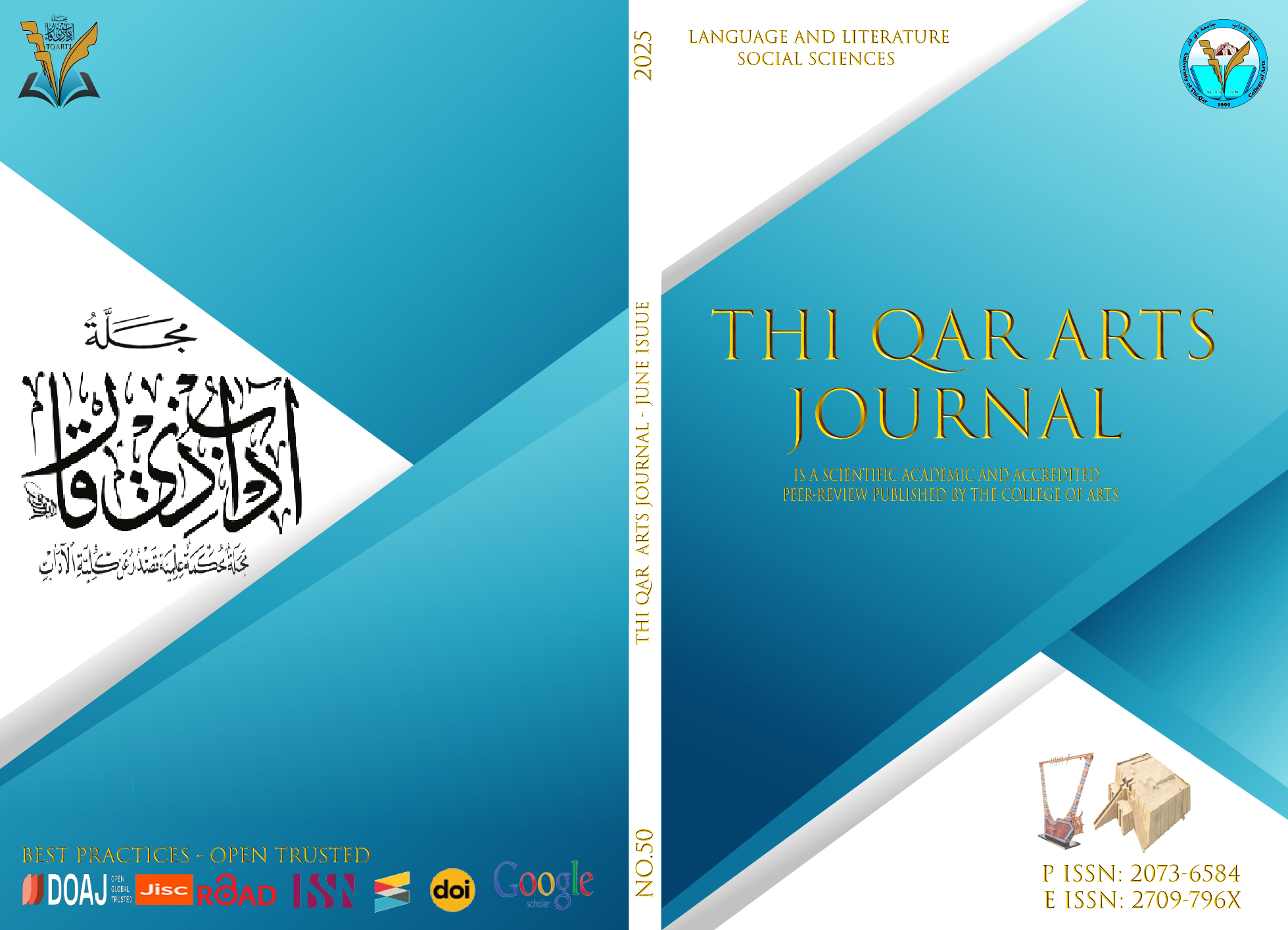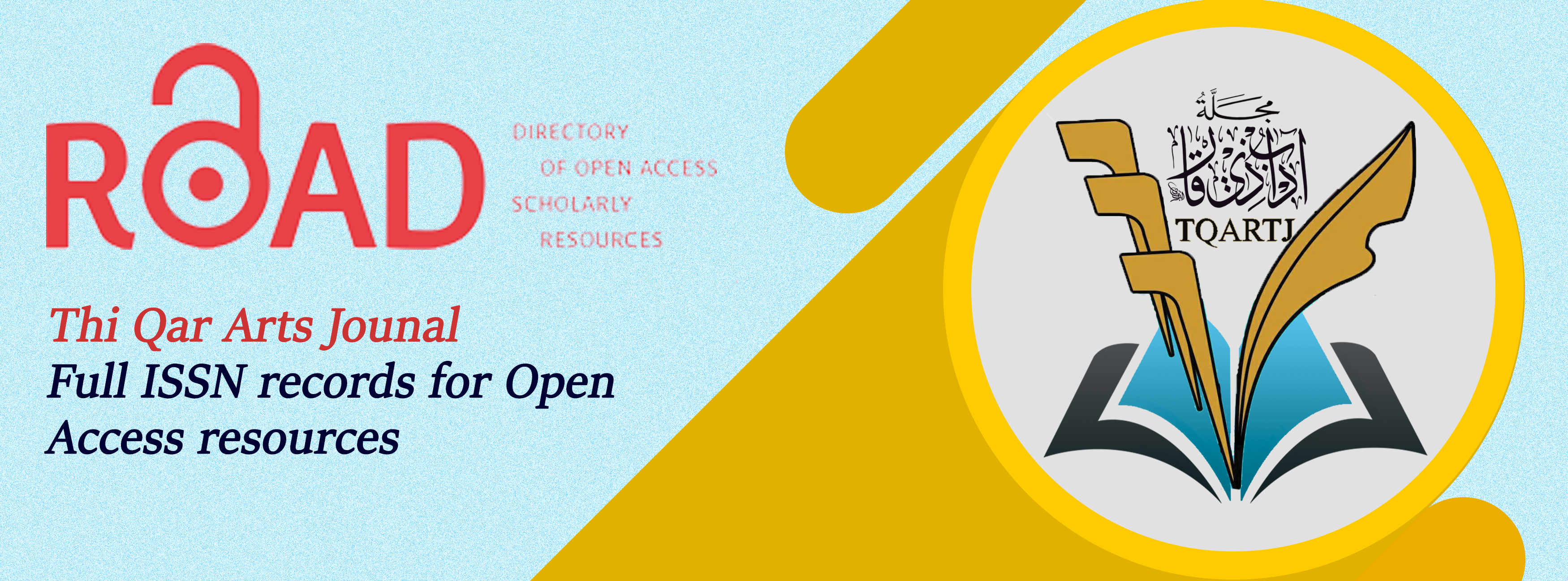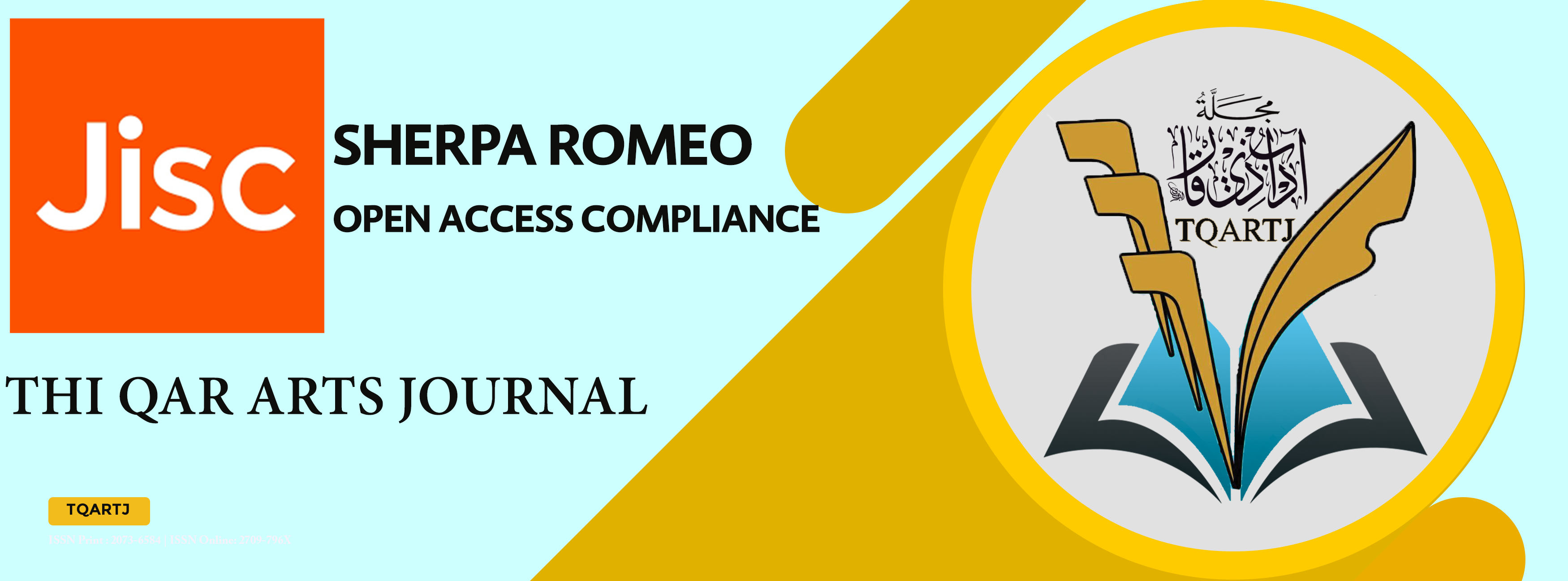Cultural signs and ideological masks
DOI:
https://doi.org/10.32792/tqartj.v4i50.788Keywords:
Love, Chaste Passion, Sufism, Cultural.Abstract
Love is a field for changing titles and abandoning constants in favor of imagined ones. Due to its shared cultural and psychological aspects, it alone makes a person symbolically abandon their apparent being and belong to an imagined being. Whether it is a beloved or an idea, it is no wonder that we find Arab and Islamic love stories always end in love and madness and are suffocated by chastity. Although these narratives often seem artificial, culture has established a standard for love among Arabs that relates to credibility and immortality, linking it to chastity. However, chastity, as an intentional principle, contradicts the excessiveness that characterizes passion and the sensory image carried by the signifier of passion, the image of the agitated she-camel seeking the male. This represents a tension and contradiction that can only be resolved by death, which achieves stillness and tranquility. Passion, from the outset, is founded on this contradiction between the driving force of longing, natural in what is called natural love, and the artificial boundaries that make passion transcend institutions. At the same time, it creates a symbolic imaginary being that can hardly bear existence. The ancients did not realize the strangeness of this creature they invented: longing without the will to unite, longing without movement, passion without longing, passion for prohibition, the pleasure of prohibition, passion for the prohibitive authority itself, passion without passion. This creature can only exist in poetry, because poetry is essentially a game of imagination, capable of creating the impossible through language. Through the investment of interpretation, the interpreter can manipulate any truth. Therefore, the distinctive idea of love among Arabs can be seen as a purifying act, while for other peoples, it is a matter of the body. The West even refers to love as 'making love,' a euphemism for the physical act that encapsulates the idea of love.
Downloads
References
1. Iram of the Pillars - From Mecca to Jerusalem: The Search for Paradise, Fadel Al-Rubaie, Riyad Al-Rais Books and Publishing, Beirut, 2000, 1st Edition.
2. Sign Systems in Language, Literature, and Culture: An Introduction to Semiotics, supervised by Siza Qassem and Nasr Hamid Abu Zaid, Elias Modern Company, Cairo, Egypt, 1986, 1st Edition.
3. The Life and Death of the Image, Regis Debray, translated by Farid Al-Zahi, Africa East Publishing House, Morocco, 2002, 1st Edition.
4. Semiotics of Language, Joseph Courtés, translated by Dr. Jamal Hadari, University Studies and Publishing Institution, Beirut, 2010, 1st Edition.
5. Satanic and Sacred Colors, Hermann Pleij, translated by Sadiq Muhammad Jawhar, Abu Dhabi Authority for Culture and Heritage (Kalima), 2010, 1st Edition.
6. Semiotics: Concepts and Applications, Said Benkrad, Dar Al-Hiwar, Latakia, Syria, 2012, 3rd Edition.
7. Visual Semiotics, Jacques Fontanille, translated by Dr. Ali Asaad, Dar Al-Hiwar, Syria - Latakia, 2003, 1st Edition.
8. The Sign: Analysis of the Concept and Its History, Umberto Eco, translated by Said Benkrad, Arab Cultural Center, Casablanca, Morocco, 2010, 2nd Edition.
9. Semiotics and Interpretation: An Introduction to the Semiotics of C.S. Peirce, Said Benkrad, Arab Cultural Center, Casablanca, Morocco, 2005, 1st Edition.
10. Genealogy of Religion: Discipline and Reasons for Power in Christianity and Islam, Talal Asad, translated and presented by Muhammad Asfour, United New Book, Beirut, 2017, 1st Edition.
11. Iconology: Image, Text, and Ideology, W.J.T. Mitchell, translated by Aref Hadifa, Bahrain Authority for Culture and Heritage, Manama, 2020, 1st Edition.
12. Paths of Postmodernism, Dr. Badr Al-Din Mustafa, Hindawi Foundation CIC, Cairo, 2017, 1st Edition.
13. Let the Veil Fall, 10 Shahdort Javan, translated by Fatima Belhassan, Petra Publishing and Distribution House, Syria, 2005, 1st Edition.
14. Semiotics of Visual Systems, Umberto Eco, translated by Muhammad Al-Tuhami Al-Amari, Muhammad Oudada, reviewed and presented by Said Benkrad, Dar Al-Hiwar Publishing and Distribution, Syria - Latakia, 2008, 1st Edition.
15. The Chador in Iran: Persian Culture and Political Dimensions, Dr. Nasreen Mustafa, Arab Forum for Iranian Studies Analysis, July 13, 2018. Link
16. The Impossible Exchange, Jean Baudrillard, translated by Dr. Jalal Badla, Maabar Publishing and Distribution, Damascus, Syria, 2013, 1st Edition.
17. The Artificial and the Synthetic, Jean Baudrillard, translated by Dr. Joseph Abdullah, Arab Organization for Translation, Beirut, 2008, 1st Edition.
Published
Versions
- 2025-08-03 (2)
- 2025-06-30 (1)
Issue
Section
License
Copyright (c) 2025 Dr.Naji Abbas Muttar

This work is licensed under a Creative Commons Attribution 4.0 International License.
The journal applies the license of CC BY (a Creative Commons Attribution International license). This license allows authors to keep ownership of the copyright of their papers. But this license permits any user to download, print out, extract, reuse, archive, and distribute the article, so long as appropriate credit is given to the authors and the source of the work. The license ensures that the article will be available as widely as possible and that the article can be included in any scientific archive.



















